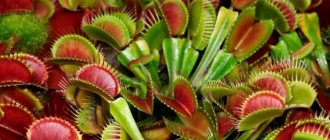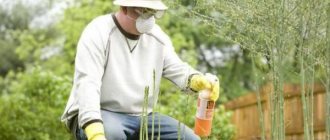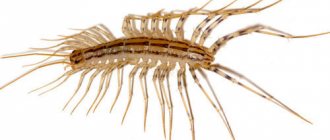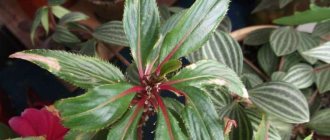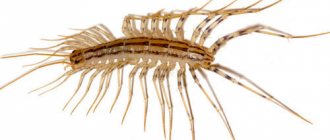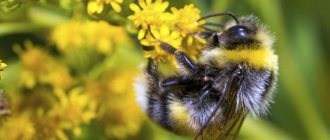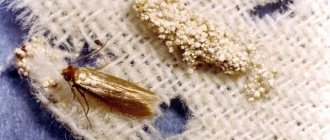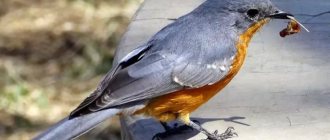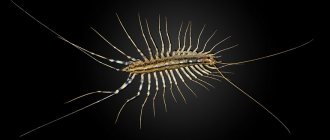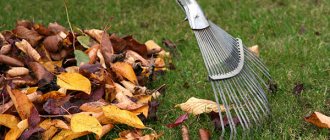Until recently, the flower that eats flies was considered a figment of fantasy, manipulation of facts and scientific errors. Charles Darwin, already famous for his theory of evolution, was heavily criticized for describing a plant that eats flies.
Moreover, for some reason, Darwin’s opponents believed that insectivorous plants refuted his theory of the origin of species. However, time put everything in its place, and the theory turned out to be correct, and the existence of predator plants was not only confirmed, but fit well into the theory of the origin of species.
Description of the plant
The Venus flytrap or Dionea is a herbaceous plant from the Sundew genus. The Latin name Dionaea muscipula translates as “mousetrap”. The meaning is used only figuratively: the plant cannot catch and “eat” a mouse.
Some believe that the plant only eats flies because that is what it is called. However, her diet may include:
- crickets;
- slugs;
- mosquitoes;
- cockroaches;
- caterpillars;
- bedbugs;
- midges and other small insects.
In their natural environment, carnivorous plants live in the wet peat bogs of the eastern American states (North and South Carolina). The first description of the Venus flytrap was made during the discovery of America; the colonialists dug up an amazing, unlike anything else plant, and took it with them to Europe.
A feature of the flycatcher, as mentioned above, is its feeding method, and Dionaea can grow only on very poor soils. It receives the nitrogen compounds necessary for the formation of proteins (building materials) exclusively from living insects, which become its prey.
The predatory part of the plant is its leaves, collected in basal rosettes. The short underground stem is bulb-shaped. The inconspicuous white flowers are arranged on long stalks to prevent pollinating insects from accidentally becoming trapped.
carnivorous plant
Darlingtonia californica
Darlingtonia leaves are bulbous in shape and form a cavity with an opening underneath a balloon-like structure and two sharp leaves that hang down like fangs.
Unlike many carnivorous plants, it does not use trapping leaves to trap, but instead uses a crab claw type trap. Once the insect is inside, they are confused by the specks of light that pass through the plant. They land in thousands of dense, fine hairs that grow inward. Insects can follow the hairs deep into the digestive organs, but cannot return back.
How do you catch an insect?
In the process of evolutionary development, the Venus flytrap acquired special, specialized adaptations that allow the plant to eat flies and other insects.
Compression phase
Before hunting, the Dionaea leaf turns outward, exposing sensitive hairs. The leaf has additional mechanisms for luring prey:
- bright attractive color;
- light fluorescent glow, which is activated in cloudy weather;
- a specific odorous liquid, “dew”, droplets of which are released on the surface.
An insect, landing on a leaf, touches sensitive hairs, and the trap slams shut. To avoid wasting energy on unnecessary movements, the impulse should pass twice with a break of less than 20 seconds. This measure protects against accidental operation when hit by stationary debris or raindrops.
Sealing and opening phases
After the trap is triggered, parts of the leaf bend in the opposite direction, forming a cavity inside in which the caught insect is located. The edge spines intertwine, closing the exit. If the insect was unable to escape, the process of digesting food begins. If the prey is too large or agile, it will be able to escape through the gaps between the spines.
If the trap slams shut in vain, it can open after 2-3 days, and the hunting process will start again.
A leaf can “work” and catch an insect up to 10 times, more often this happens no more than 3 times. After this, the carnivorous trap dies off, and a new one grows in its place.
Digestive mechanism
The closed trap turns into a kind of “stomach” in which digestion occurs. The trap cells begin to secrete digestive enzymes that dissolve the soft tissues of the victim's body.
The hard shells of the insects are not digested and are thrown out of the trap when the process is complete. Organic and mineral substances are absorbed by the plant and serve as nutrition.
Interesting fact! The process of how the Venus flytrap eats flies is still not fully understood. Charles Darwin, author of the theory of the evolutionary origin of species, back in the mid-19th century. was interested in the life processes of Dionaea. Because of its “bloodthirsty” nature, he called the carnivorous plant a “creepy prison” for flies and wrote a separate book where he described in detail what the Venus flytrap feeds on and the peculiarities of its “feeding.”
Digestion
Some interesting facts
Among these insects there are many species with unusual feeding preferences. Let's look at what flies eat in natural conditions:
- There is a special type, cheese flies, that can breed and feed inside the cheese wheel. They are called pyophilides.
- The striped yellow-and-black syrphid, or hoverfly, a wasp-like dipteran, eats flower nectar.
- The larvae of hover flies are distinguished by an enviable appetite: during their development to an adult, each of them eats more than 2 thousand aphids.
- The dangerous Tsetse fly prefers the blood of wild animals, cattle, and people as food. The bite of this African resident can cause incurable diseases of the nervous system and immunity.
Among the flies there are also real predators, for example, ktyri, owners of a sharp poisonous sting. Their food includes mosquitoes, midges, even bees and flies. Interestingly, some types of flies are cultivated by fishing fans. Thus, the blue spring fly is specially bred on bird droppings, pig manure, its food is rotting organic remains, and the insects are also fed with sugar and dry milk.
Caring for a Venus flytrap at home
This exotic plant is very demanding in terms of conditions.
Location and lighting
At home, the flytrap should be placed on sunny windowsills, preferably facing south. Lighting should be at least 5 hours a day. In spring and autumn it is necessary to artificially illuminate the plant. With a lack of light, the leaves become stretched and turn pale.
Flower content temperature
Dionea is a heat-loving plant. The temperature during the active phase should be between 22-30°C.
Watering
The soil in the pot with the flytrap should always be kept moist. Water the Dionaea through a tray. To prevent the soil from drying out, you can use mulch made from natural sphagnum moss.
Watering can only be done with clean, settled rain or distilled water.
Soil and pot
In their natural environment, flycatchers grow on very poor and acidic (3.5-4.5 pH) soils. At home, they need to be provided with approximately the same conditions, since plants simply cannot live in rich, fatty substrates.
The soil mixture is made from a mixture of high-moor peat and pure quartz sand (possibly with the addition of soaked perlite).
The optimal container for the growth and development of the flycatcher will be a transparent aquarium, which will provide sufficient lighting and protection from drafts. If the plant will grow in a pot, it should be light in color so that the root system does not overheat. A prerequisite is the presence of drainage holes and a tray.
Planting and replanting Dionaea
The flycatcher must be replanted from the transport container, then replanting is not necessary provided proper watering and care.
Dionaea must be carefully removed from the pot, the soil removed, and the root system washed with clean (boiled, distilled) water. Fill the new pot to a depth of 20 cm with fresh substrate, place the Dionaea, and sprinkle the roots with soil.
To get used to it, the new plant should be placed in partial shade for a month, maintaining constant humidity.
The flower should be placed in partial shade
Venus flytrap blooming
The Venus flytrap blooms for 1.5-2 months in late spring and early summer. If the owners do not intend to propagate the plant by seeds, it is better to cut off the flower stalks so as not to deplete the strength for the formation of traps.
Fertilizers and fertilizers
The flycatcher does not need fertilizers or fertilizing, and is even contraindicated. She obtains nutrients herself from caught insects.
Attention! Dionea requires live insects to feed on it. She is unable to digest ordinary protein foods, such as raw meat.
Winter dormancy period
At the end of September, the flycatcher gradually begins to prepare for winter “hibernation”. New traps are not formed, the rosette decreases in size. In December there begins a period of rest. For 3-4 months, the plant must be provided with a temperature of 2-7 ° C, darkening, but be sure to keep the soil moist.
In February, the flower awakens and a new development cycle begins.
Zhiryanka
This plant has a simple adaptation for hunting: its fleshy leaves are covered with a special mucous and sticky secretion. Insects stick to it. When the prey is caught, the butterwort secretes additional enzymes to digest it. And if the insect is large and resists, the leaves of the plant smoothly curl, preventing it from getting out. The butterfly also copes with small prey.For normal growth, the plant needs a temperature of 25–28 °C in the warm season and 15–18 °C in the winter months. Zhiryanka feels comfortable in diffused light and partial shade. And it must be protected from direct sunlight.
Air humidity should be at least 50%. The plant needs to be watered regularly - with distilled water through a tray. The soil should remain moist, but not resemble a swamp. Spraying is not required: it can damage the leaves.
Buy a plant →
Admire the blossoms
